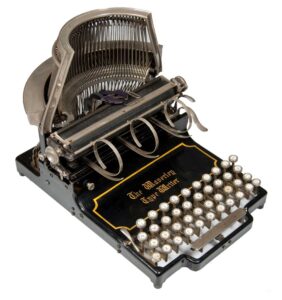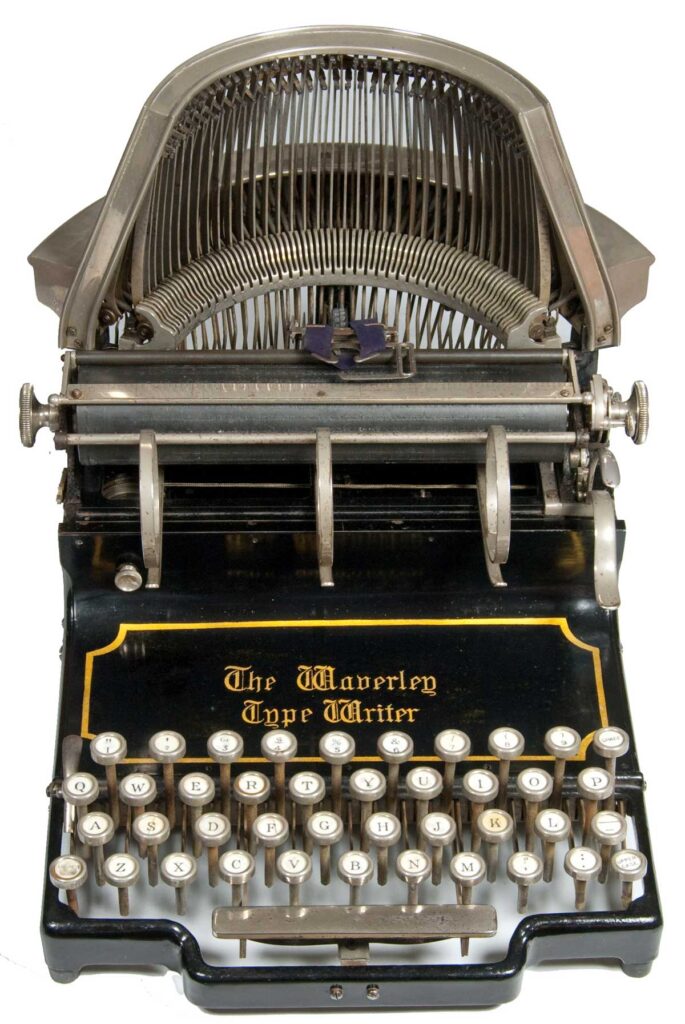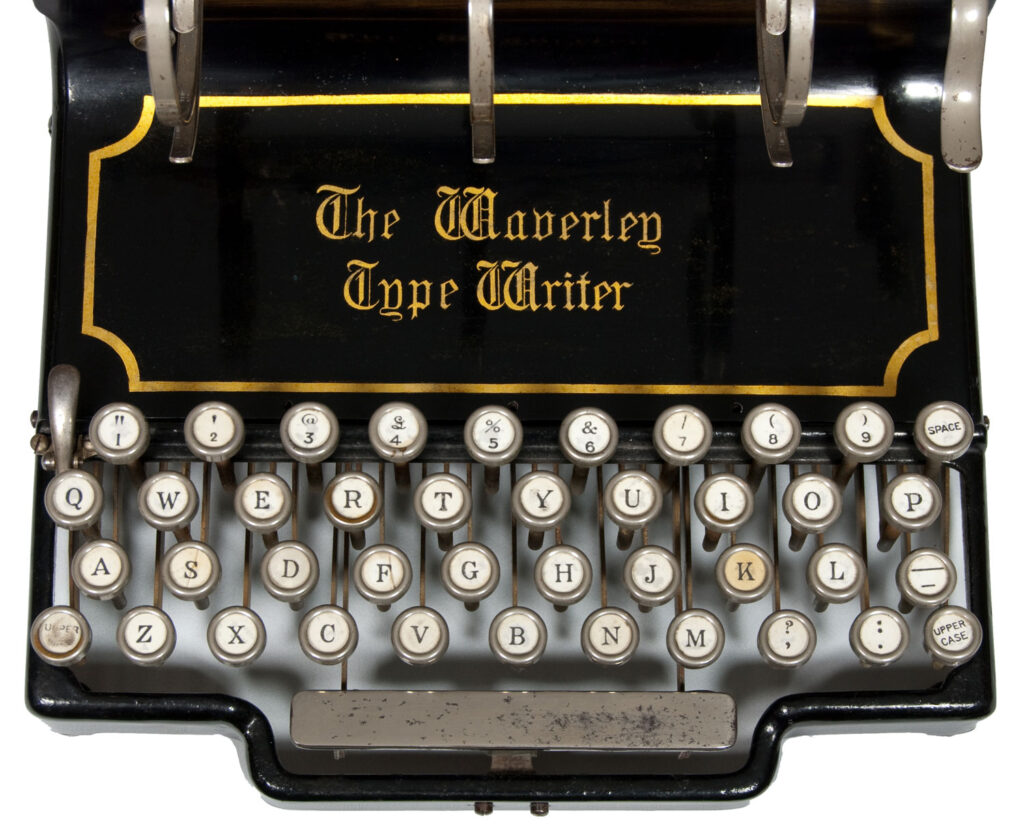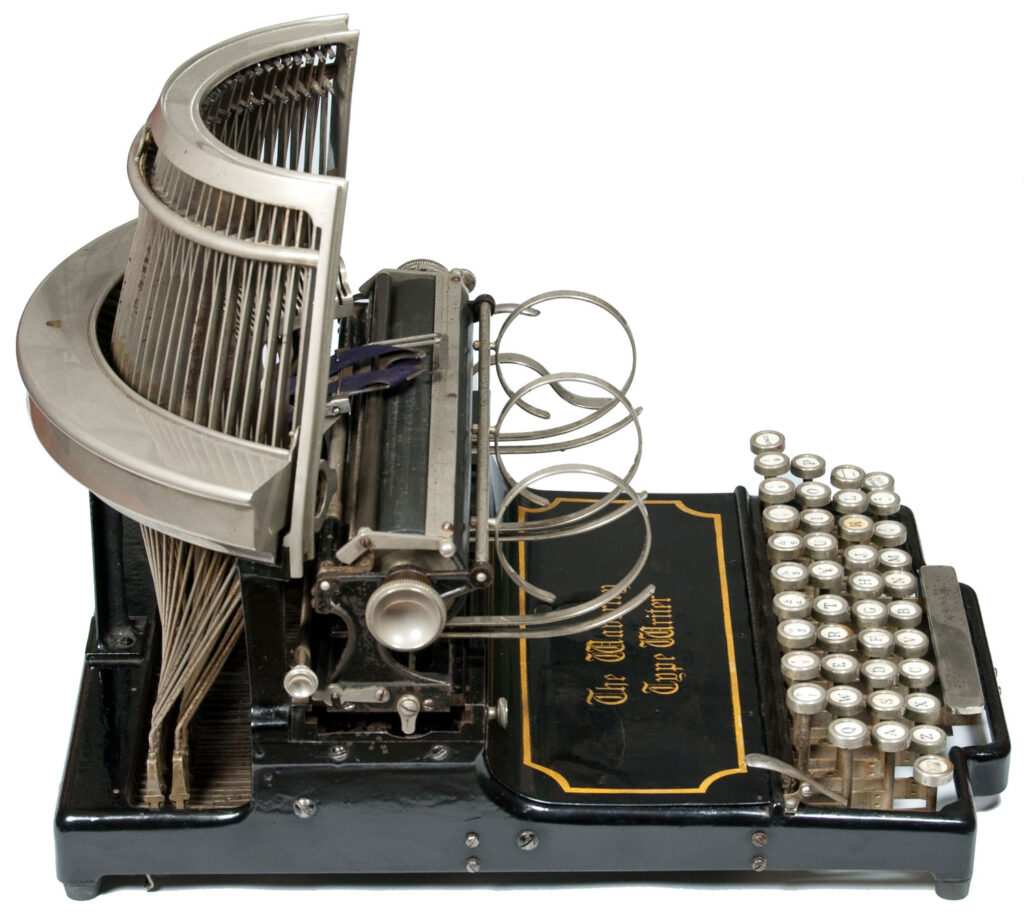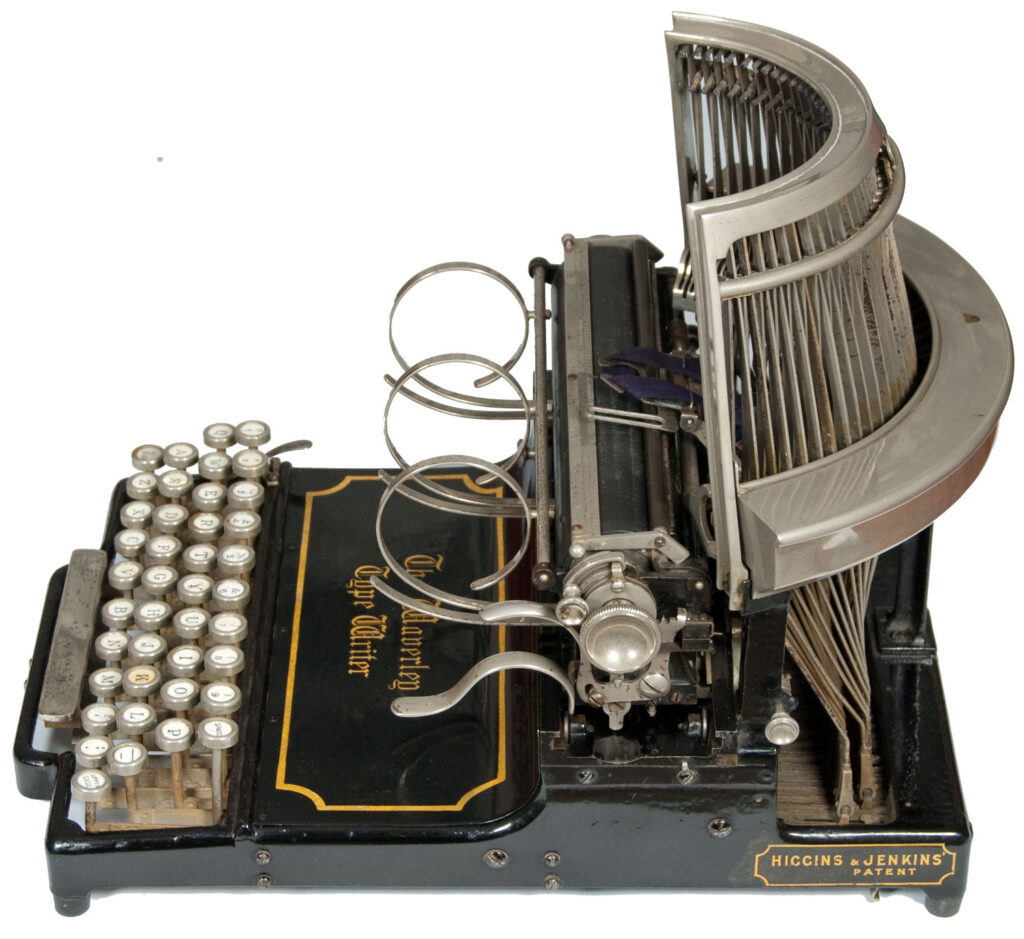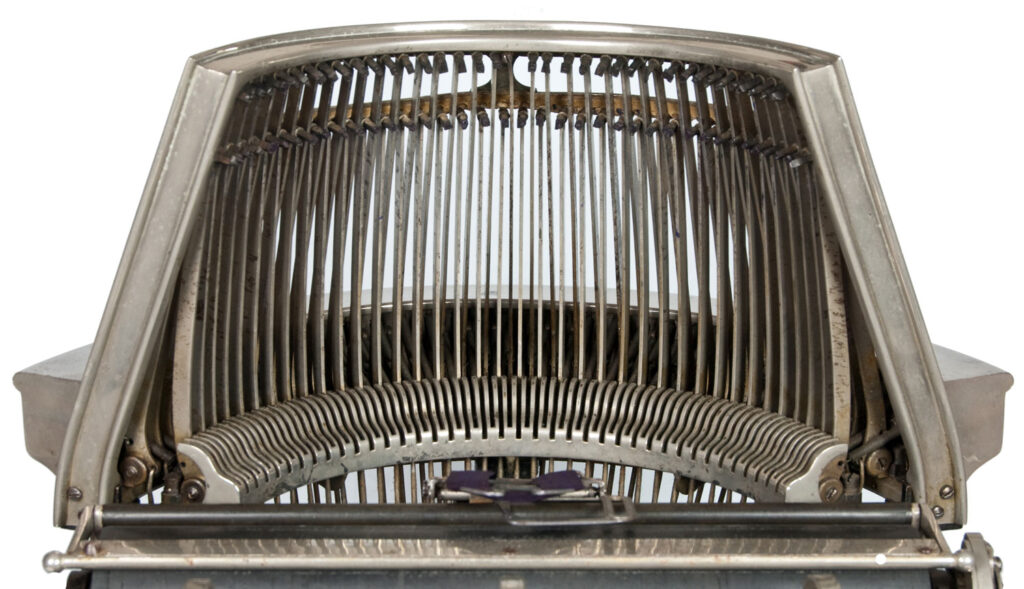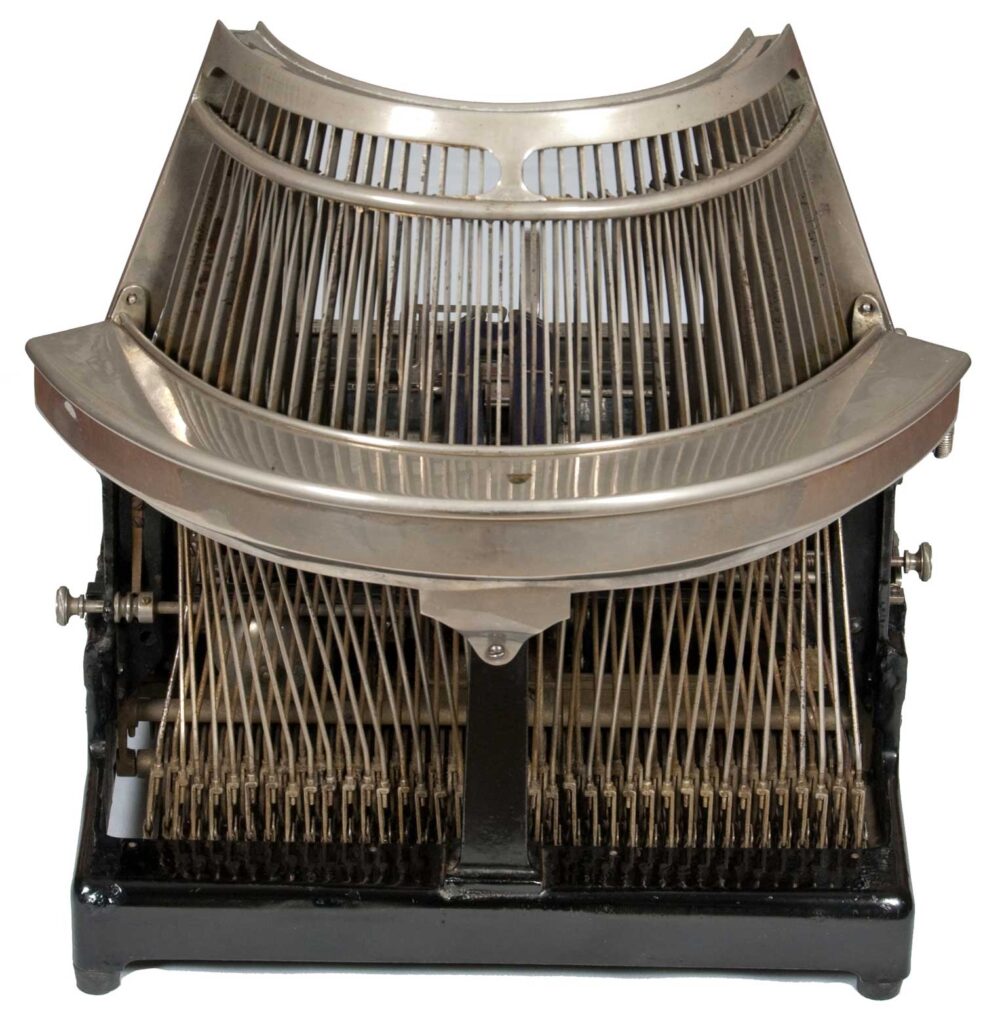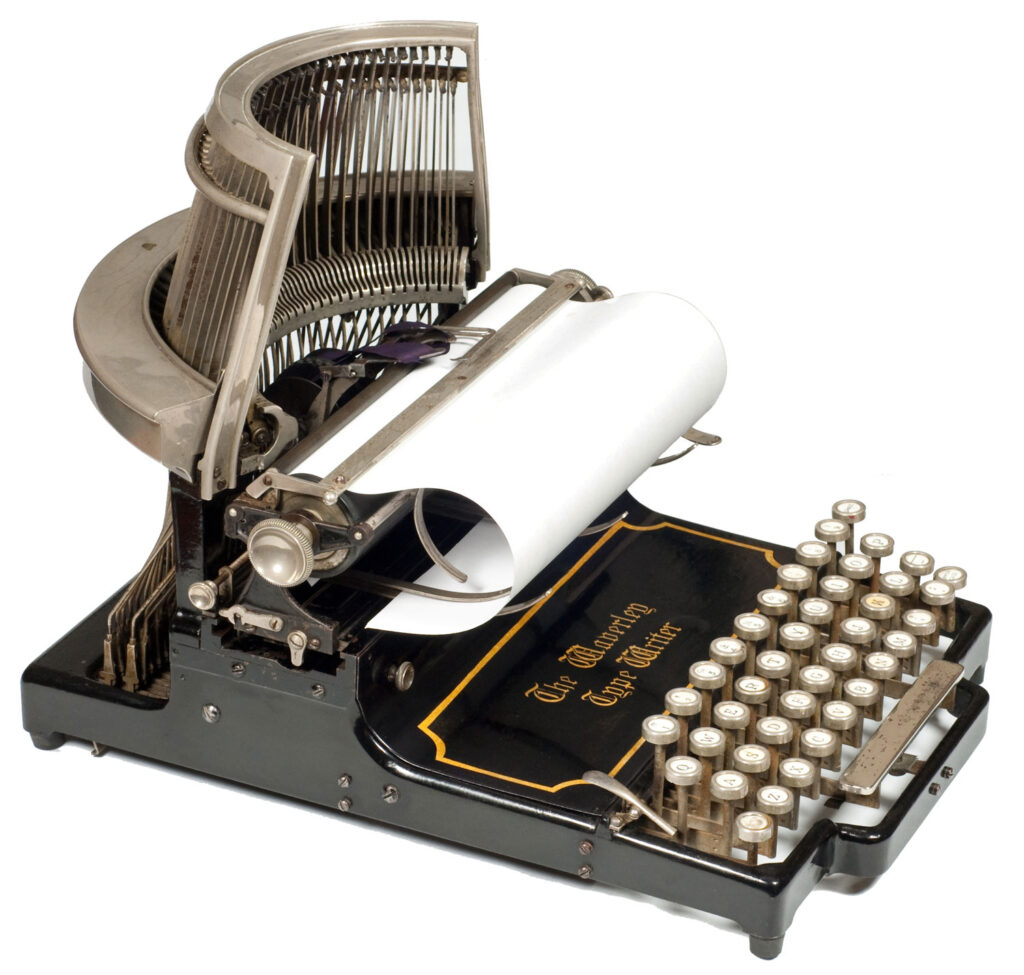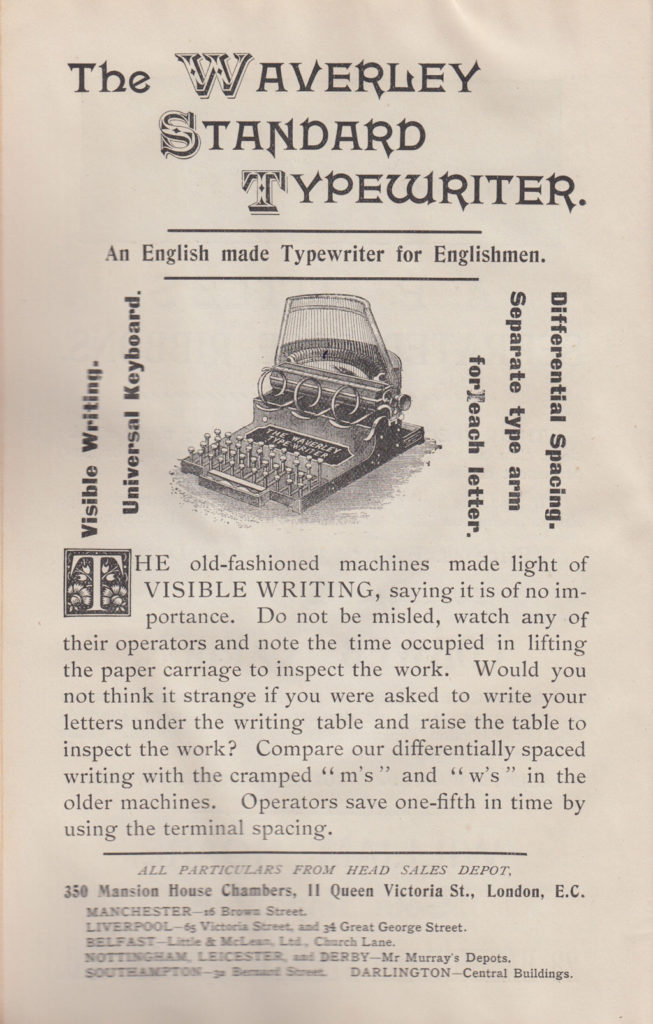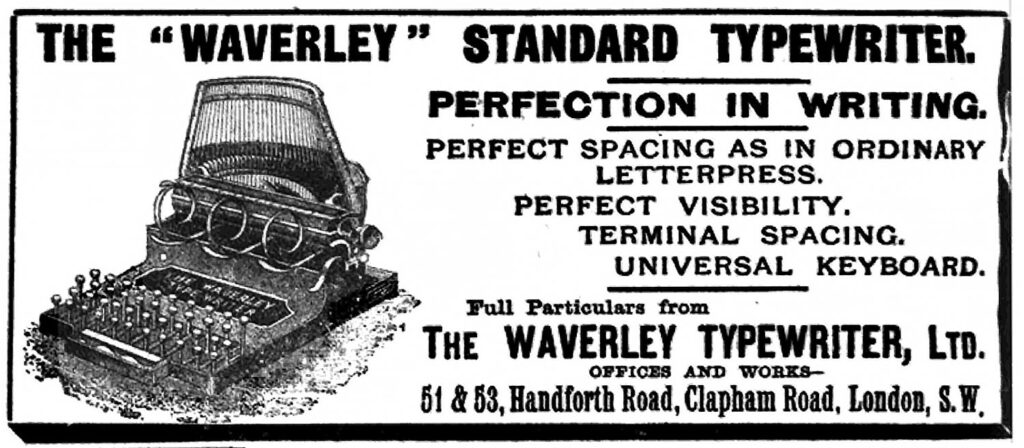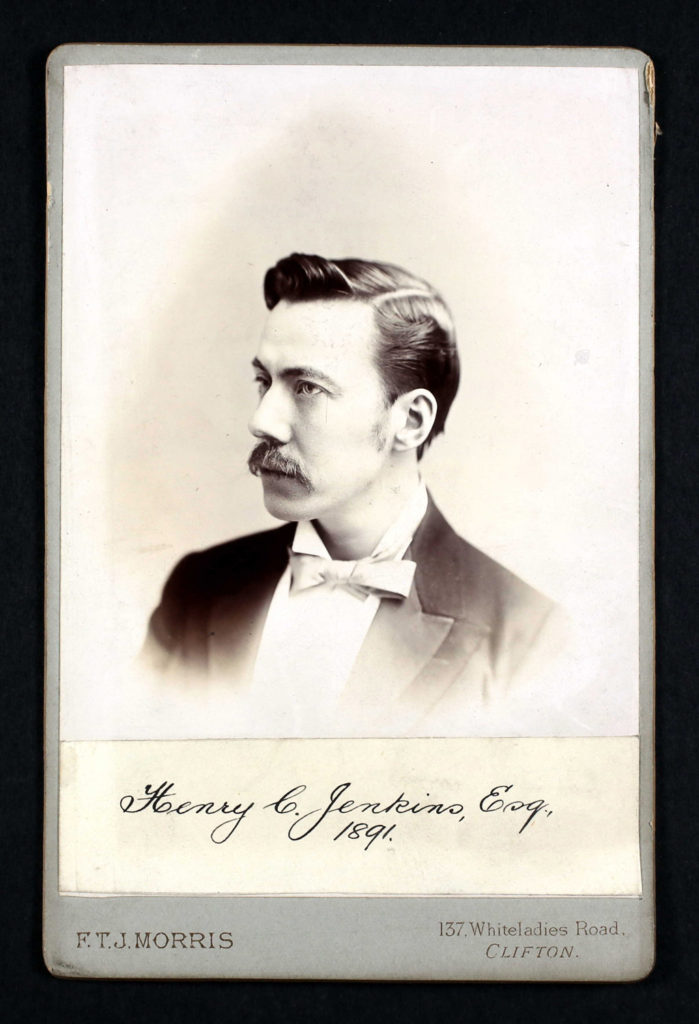The Waverley Typewriter – An illustrated article
The development of the Waverley began as early as 1889. Despite the ambitious efforts of its inventors, Higgins and Jenkins (see portrait below of Henry Charles Jenkins), the Waverley typewriter was on the market for only a short time, from 1895 to 1897, before going into receivership.
The most distinguishing feature of the elegantly designed and precisely engineered Waverley is the placement of its typebars, which stand vertically behind the platen. In this configuration, the typebars swing downward toward the typist, striking the top of the platen. While this allowed a clear view of the writing as it appeared, it complicated the carriage design, since the typebars obstructed the paper’s natural path. As a result, the page had to remain fully within the carriage assembly throughout the typing process.
To load a sheet of paper, the bottom edge is pushed back a few inches onto three prongs, under the hoops at the front of the carriage (see image below). As one types, the paper moves up, over, and around the platen, eventually curling up within the hoops. Once the page is fully advanced, it is removed by pulling it out sideways.
The Waverley also featured some unusual mechanisms, notably a shifting system that used an entirely separate set of typebars for lowercase characters and another set for uppercase. Whereas most typewriters shift by raising either the carriage or moving the typebasket to alternate between characters on a shared typebar, the Waverley disengages one complete set of typebars and engages the other when the shift key is pressed.
As seen in a few other early machines, the Waverley includes proportional spacing. In its case, this feature is limited to the widest letters, M and W, with the carriage moving slightly farther to accommodate their width.
Another seemingly clever innovation is the ability to press the spacebar simultaneously when typing the final letter of a word, allowing the typist to immediately begin the next word. It’s hard to say how much time this innovation actually saved.
The Waverley also includes a second, small and round, space key that moves the carriage the width of a standard character. The wide spacebar, positioned in front of the keyboard, moves the carriage twice the distance, providing space between words.
“An English made Typewriter for Englishmen.”
“The old-fashioned machines made light of VISIBLE WRITING, saying it is of no importance. Do not be misled, watch any of their operators and note the time occupied in lifting the paper carriage to inspect the work”
